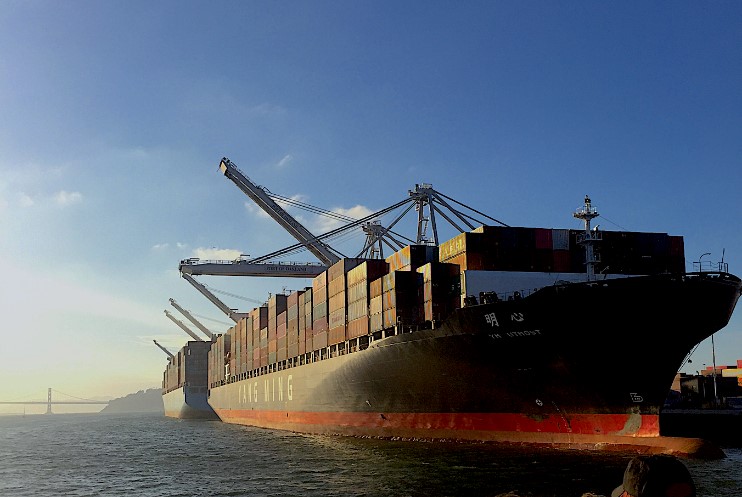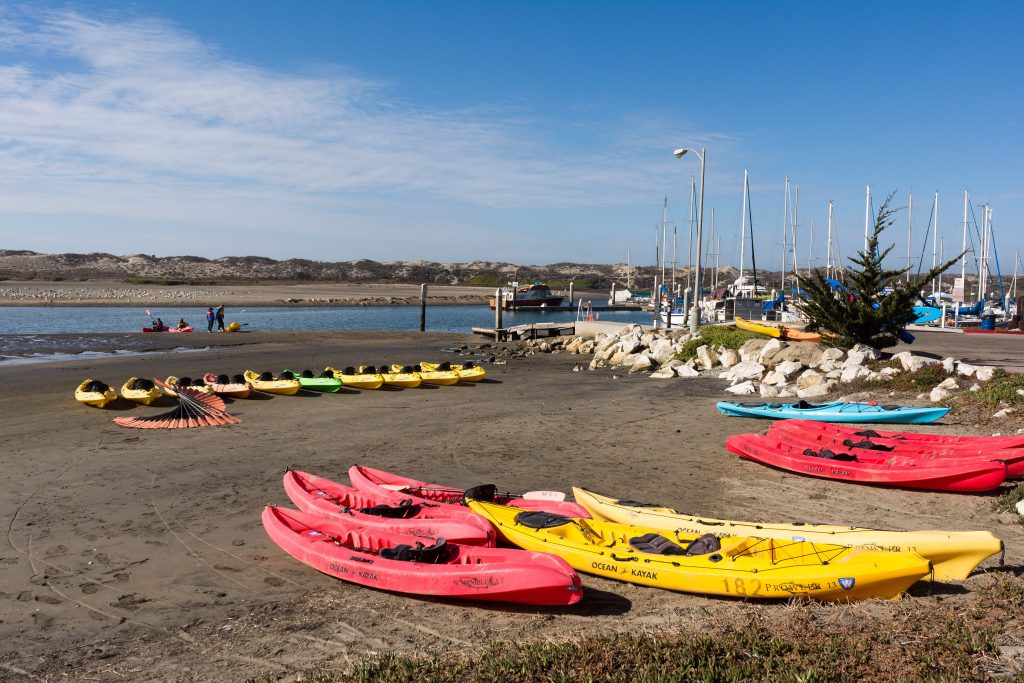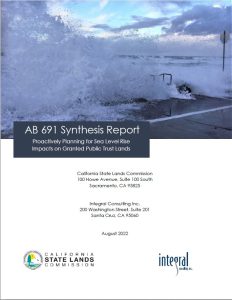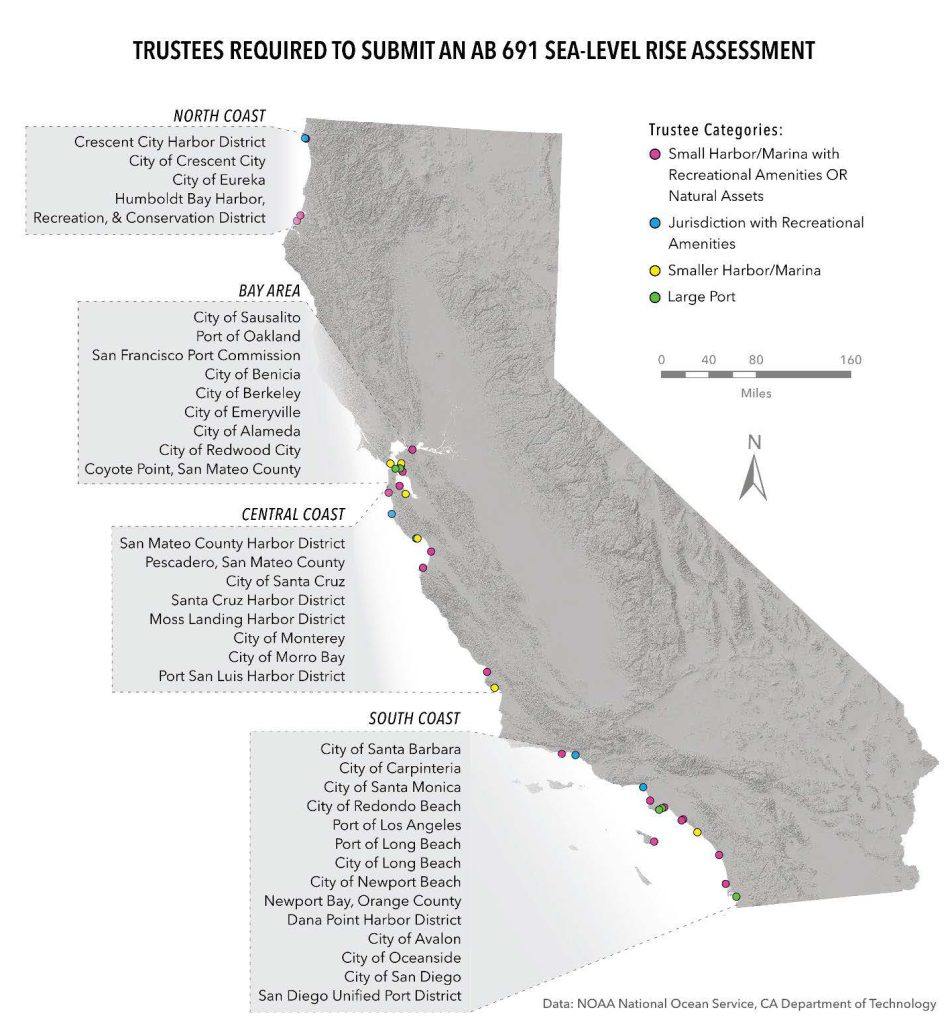
California’s state lands and public trust resources, such as public beaches, ports, and marinas, are at risk from sea level rise and could be severely damaged or lost if actions are not taken now to prepare them. In many areas, state lands and public trust resources are managed on behalf of the state by local “trustees” such as cities, counties, and port districts. These lands, often called “granted lands,” support important and wide-ranging uses and purposes, including public access to the ocean, beach recreation and tourism, commercial shipping, and commercial and sport fishing. To preserve these valuable lands and their uses, the Commission needs to know which assets and resources are in harm’s way and support the trustees’ plans for adapting to higher sea levels.
Assembly Bill 691
AB 691 (Muratsuchi, 2013) required local trustees of state lands to assess the impacts of sea level rise on the state lands and public trust assets they manage and propose adaptation strategies to build resiliency to coastal climate change impacts. The legislation required trustees that averaged at least $250,000 in annual revenues generated from state lands to submit their assessments to the Commission in 2019.
The assessments contained the following components:
- Assessment of sea level rise vulnerability for state lands and assets
- Maps of sea level rise projections for affected state lands and assets
- Estimates of financial costs associated with sea level rise
- Proposals of adaptation strategies
AB 691 Synthesis Report
The Commission drafted a synthesis report that summarizes the assessments, identifies the common challenges posed by sea level rise to state lands managed by local trustees, and makes recommendations to improve sea level rise preparedness.
Key Findings:
- The most vulnerable assets to sea level rise = the vessel infrastructure at ports and harbors that support commerce, navigation, and fishing.
- The total estimated damage to state lands managed by local trustees = over $19 billion by 2100 if no proactive adaptation strategies are implemented.
- Additional damages to natural resources and recreational amenities = over $5 billion by 2100.
- The potential costs are much higher than the estimates from trustees because there is a lack of economic data for many assets, including natural resources.

Cargo ships at the Port of Oakland. Photo courtesy of Integral Consulting.

Kayaks at Moss Landing, California by Dan DeBold is licensed under CC BY 2.0.
Trustees’ Sea Level Rise Impact Assessments
The Commission received assessments from 32 trustees.
Trustees Subject to AB 691 by region:
- Central Coast
- South Coast
- City of Santa Barbara
- City of Carpinteria
- City of Santa Monica
- City of Redondo Beach
- Port of Los Angeles
- Port of Long Beach
- City of Long Beach
- City of Newport Beach
- Newport Bay, Orange County
- Dana Point Harbor District, Orange County
- City of Avalon
- City of Oceanside
- City of San Diego
- San Diego Unified Port District



